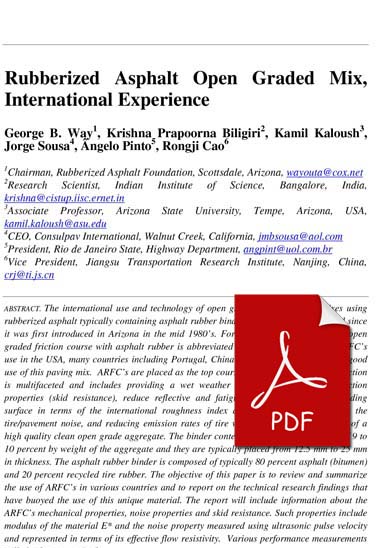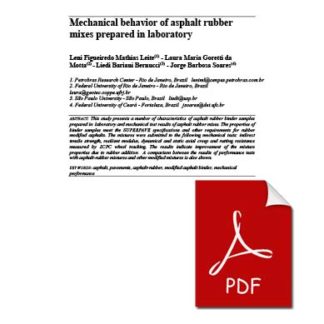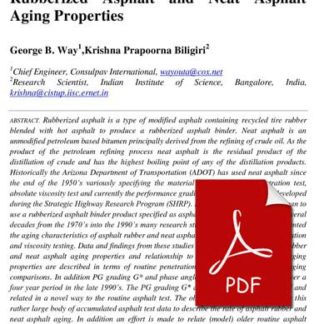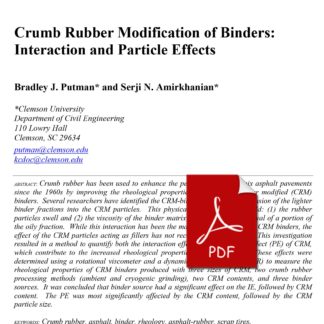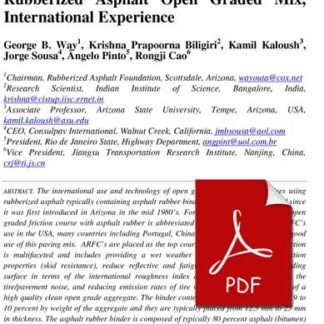Description
The international use and technology of open graded friction course mixes using rubberized asphalt typically containing asphalt rubber binder has grown and expanded since it was first introduced in Arizona in the mid 1980’s. For purposes of this paper the open graded friction course with asphalt rubber is abbreviated as ARFC. In addition to ARFC’s use in the USA, many countries including Portugal, China and Brazil are also making good use of this paving mix. ARFC’s are placed as the top course wearing surface. Their function is multifaceted and includes providing a wet weather surface with very good friction properties (skid resistance), reduce reflective and fatigue type cracking, smooth riding surface in terms of the international roughness index and a surface that dampens the tire/pavement noise, and reducing emission rates of tire wear. ARFC’s are composed of a high quality clean open grade aggregate. The binder content is typically in the range of 9 to 10 percent by weight of the aggregate and they are typically placed from 12.5 mm to 25 mm in thickness. The asphalt rubber binder is composed of typically 80 percent asphalt (bitumen) and 20 percent recycled tire rubber. The objective of this paper is to review and summarize the use of ARFC’s in various countries and to report on the technical research findings that have buoyed the use of this unique material. The report will include information about the ARFC’s mechanical properties, noise properties and skid resistance. Such properties include modulus of the material E* and the noise property measured using ultrasonic pulse velocity and represented in terms of its effective flow resistivity. Various performance measurements will also be summarized.

